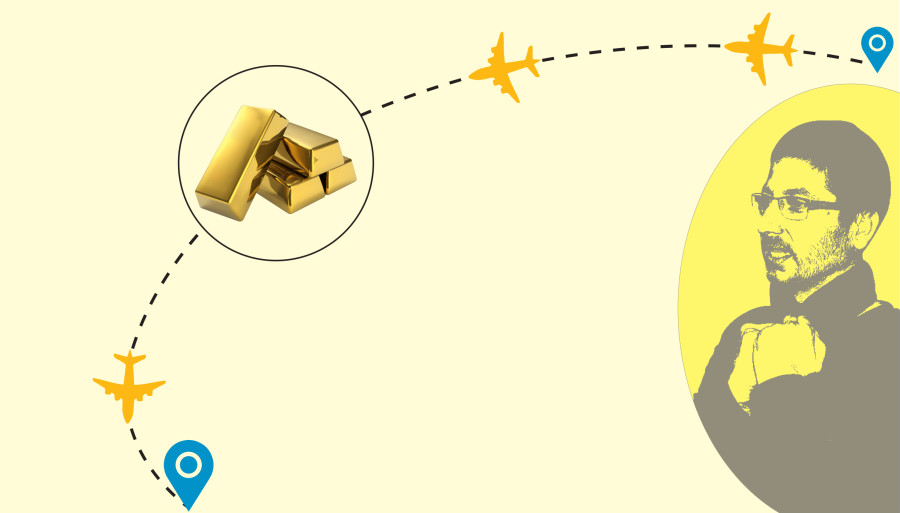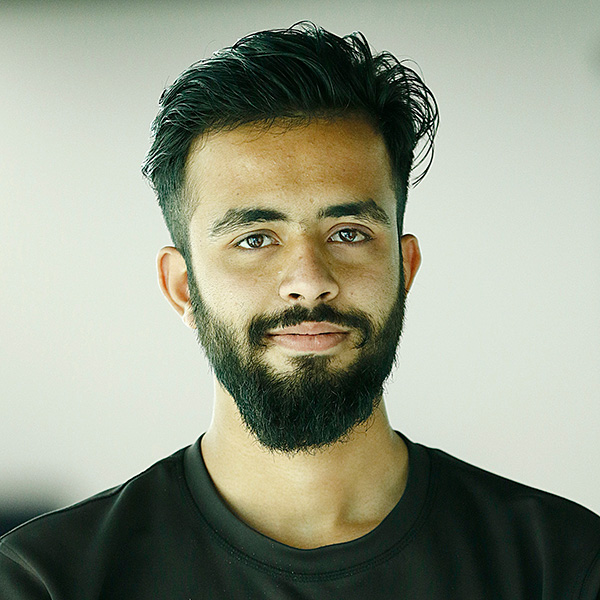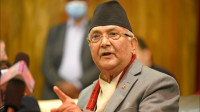National
Everything you need to know about the biggest gold smuggling racket in Nepal
Nepal's biggest gold smuggling racket also exposes serious security vulnerabilities at the country’s only international airport.
Nayak Paudel
It all started with the murder of Sanam Shakya on March 2, 2018. But soon, police in Morang district discovered that Shakya’s killing was carried out by a group of smugglers to retrieve 33.5 kilos of gold that had been robbed from them. A high-level probe committee formed by the Home Ministry then investigated both the murder and the whereabouts of the smuggled gold and pointed out 293 individuals in connection with the biggest gold smuggling racket operating in the country.
Big names are involved in the racket, including senior police officers and businessmen, according to the probe committee. The smuggled gold has also led to two more deaths as Sanu Ban and Premlal Chaudhary, two airport staff who were found to be working for the cartel, committed suicide. Ban walked into traffic and was crushed by a tanker, and Chaudhary reportedly used his trousers to hang himself while in police custody.
A year and two months later, after the arrest of 46 individuals, including the racket leader Chudamani Upreti ‘Gore’ (pronounced GO-REY), and the consequent release of prime suspects including senior police officers, the government still has no clue about where all the gold is.
What is the 33kg gold smuggling case?
The 33.5kg gold, which, according to Gore’s statement, belongs to an Indian businessman, arrived on a FlyDubai flight from the United Arab Emirates on January 23, 2018. Two airport staff, Punya Prasad Lama and Sanu Ban, received the gold, dodged customs and were transporting the smuggled gold to a prearranged destination when their plan was foiled. Lama and Ban, who were transporting the gold, were reportedly robbed in Anamnagar by a group of unidentified people who introduced themselves as police officers. Following the incident, the racket, which is believed to have smuggled around four tonnes of gold worth Rs17 billion in the last four years, launched an investigation into its own members.
How was the racket exposed?
Following the robbery, Gore, who was in Kolkata when the racket’s plans were foiled, returned to retrieve the gold after hearing from Ban. Once back, Gore started to interrogate suspects within the racket and even torturing them physically.
But the Gore-led interrogation did not go as planned. During the interrogation process, racket members Lakpa Sherpa, Surendra Gautam, Tek Raj Malla and Tuk Bahadur Maga ended up killing Shakya with excessive electrocution. After Shakya’s death, Gore called sub inspector Balkrishna Sanjel, his ally at the Metropolitan Police Crime Division, to seek help in getting rid of the body.
But Gore, who had been waiting for Sanjel’s call, received a call from Division DSP Prajit KC instead, who assured to help him provided they could arrange Rs20 million to get rid of the body. A doubtful Gore then dismissed KC’s offer to meet and fled to India, putting Tek Raj Malla in charge of the situation.
When Sanjel and KC didn’t hear from Gore, they informed the Morang District Police about the body, following which Malla, along with Narendra Karki and Mohan Kafle, two other suspects that Gore and cohort were interrogating, were arrested.
The arrests kickstarted a murder investigation, but only to discover that a big haul of gold had been smuggled and then robbed, leading to Shakya’s murder. A high-level probe committee under former DIG Pushkal Raj Regmi launched its investigation in March last year but a month later, the Home Ministry appointed its joint-secretary Eshor Raj Poudel to lead the committee. Senior police officers and businessmen were then arrested in connection with the case.
On May 22, the police arrested Gore.
 Gore being presented before media after his arrest in May last year. Post Photo: Sanjog Manandhar
Gore being presented before media after his arrest in May last year. Post Photo: Sanjog ManandharWas the racket exposed ever before?
On January 5, 2017, the Central Investigation Bureau seized 33 kg gold from Gopal Bahadur Shahi, as he was about to get in a taxi at the main exit gate of the airport. Then in-charge of the airport, SSP Shyam Khatri, was also arrested a month later for facilitating the smuggling but he was released by the Kathmandu District Court after he deposited a bail bond of Rs200,000.
The probe committee has now established that the smuggling was carried out by Gore’s racket. In his statement to the Morang District Court, Gore also revealed that Khatri charged Rs50,000 per kg in fees to help get the smuggled gold out of the airport.
Who are the security officers accused in facilitating the racket?
Four police officers at the division have been accused of being involved with the racket. While KC and Sanjel had offered a deal to help Gore get rid of the body, then Division Chief SSP Dibesh Lohani has also been accused of assisting KC and Sanjel, according to the probe committee. Division sub-inspector Gajendra Rawal has also been found to have links with Gore.
It is not clear what the officers’ intentions were. One high-level police officer said they intended to arrest Gore but Sanjel’s current and past contacts with Gore, as discovered by the investigators, raises doubts over the officers’ intentions.
Four retired police officers, including Khatri, who was arrested during the 2017 bust, have been accused of assisting the racket to smuggle the gold by dodging airport customs. By the time he was arrested in 2017, Khatri is believed to have facilitated the smuggling of some 500kg gold. He has since been removed from the airport security and reassigned.
Former DIG Govinda Niroula, who is a friend of Gore’s father, SP Bikash Raj Khanal and DSP Sanjay Raut are the other officers accused of aiding in the smuggling.
How did the gold pass undetected through the airport?
The gold never made it to the scanners or customs officials as smugglers used their connections to exploit the lax security arrangements at the airport. On-duty police officers working with the racket provided designated carriers with airport passes that granted them exclusive clearance and movement within the airport.
In his statement to the probe committee, Gore confessed that 25 to 30kg of gold has been smuggled at once using what he called the ‘third-line’ smuggling or using security officials at the airport.
According to the probe committee, carriers flying in from Fly Dubai or Thai Airways would take the smuggled gold to the cabin of officers at the airport, who would then carry the gold outside the airport using their private vehicles.
Not only did the racket infiltrate the airport security system using airport passes or by establishing connections with senior police officers, it also had help from airport staff like Ban and Chaudhary, who had exclusive clearance and access, including in the aircraft, where carriers are believed to have hidden the gold in restrooms.
Where was the smuggled gold taken to?
Once the gold was out of the airport, carriers would then transport the gold to a predetermined address and handover the gold to another party. The smuggled gold would then be divided among Nepali investors, but a large part of it would then be smuggled to India using different carriers in different border areas.
Who were the major investors and helpers of the racket?
A nexus of Nepali and Indian businessmen, allegedly engaged in real estate and money laundering, have been funding the racket, according to the probe committee. Nepal-based Indian businessman Mohan Kumar Agrawal allegedly has the highest stakes and is still at large.
Similarly, two other Indian businessmen Bimal Poddar and Raj Kumar Agrawal have been accused of investing in the racket. Poddar is Deepak Malhotra’s business partner and has investments in real estate in Nepal.
Rajendra Kumar Shakya of RK Jewelers, Labim Mall restaurateur Akbar Shah, a long time associate of Jamim Shah, who was shot and killed at Lazimpat in 2010, and businessmen Istiyaz Uddin and Raj Kumar Daruka are other key people, according to the investigators.
The investigation has also established that Bhujung Gurung, a former central committee member of then Rastriya Prajatantra Party, received commissions from Gore for exploiting his connections at the airport to facilitate the clearance of the gold. Gurung’s brother-in-law Tsering Wangdel Ghale also received a commission for the smuggled gold. According to the investigators, both Gurung and Ghale had good connections at the airport.

The gold seized by Indian officials last year. Photo: Government of India
So where is all that gold now?
On December 7, 2018, the Directorate of Revenue Intelligence, Kolkata, seized 33kg gold from two Nepalis at Dankuni Toll Plaza in the Delhi-Kolkata Highway. Hem Prasad Sharma and Rakesh Prasad, the duo who are currently in custody and under investigation by Indian authorities, are the same people named by the Eshor Raj Poudel-led probe committee, which investigated the gold smuggling case in Nepal.
While the Nepal Police and government officials are seeking repatriation of the duo and have offered assistance in the DRI investigation, there are speculations that the 33kg gold seized from the highway in India is the same gold robbed in Anamnagar. However, one investigation committee member said they are still not sure if the gold was really robbed or if it entered through the airport in the first place.
Gore, in his statement at the Morang District Court, had confessed that both Ban and Lama had told him that they were robbed by people who were associated with Gurung and Ghale.
Where does the case stand at the moment?
District Attorney Office in Morang has filed a charge-sheet against 75 individuals in connection with Shakya’s murder and their involvement in the smuggling racket. While 31 of the accused are still at large, the court has extended judicial custody for 34 individuals, while the remaining accused have been either released on bail or general date by the Biratnagar High Court.
Accused individuals, including former and active senior police officers like Niroula, Lohani, KC and Sanjel, have also been released on general date by the court and have resumed their service since. Businessmen like Rajendra Kumar Shakya, Prabhat Agrawal and Madan Silwal have also been released.
Following the release of the division police officers, the Office of Attorney General has filed a case at the Supreme Court demanding an overturn of the high court decision. However, the hearing for the case has not been scheduled for more than two months now. According to the Office of the Attorney General, the accused, who could face more than a 10-year jail sentence, should be kept in judicial custody, given the strong evidence against them.
Nepal Police has also issued a red-corner notice against some of the key individuals accused in the case. Benu Shrestha, an aide of Gore, was repatriated to Nepal after United Arab Emirates officials arrested him in September last year. Similarly, Gore’s brother Ramesh Upreti and Hari Sharan Khadka, another aide of Gore, have also been arrested in the UAE but are yet to be repatriated.

The defendants of the gold smuggling case are brought to the Morang District Court in May, 2018. Post Photo: Jitendra Sah
Do the government and police have a plan to end gold smuggling?
Law enforcement authorities say that with increased security measures, gold smuggling is a thing of the past and smugglers’ plans to bring in any gold into the country continue to be foiled by police. Both the Home Ministry and Nepal Police officials claim that there is no way gold can ever be smuggled again in such big quantities.
Does that mean the smuggling of the precious yellow metal stopped?
No. Police officers continue to seize gold at the country’s only international airport and border areas in the southern plains. Between February 2018 and February 2019, approximately 115 kilos of gold has been confiscated across the country, leading to 128 arrests.
The police also confiscated 23.6kg gold in Kanchanpur from Nepali smugglers who said they had smuggled the gold from India. The Nepal-China border in Rasuwa remains equally porous.
Smaller rackets are also in operation, according to senior ministry and police officials. DIG Shailesh Thapa Kshetri of the Metropolitan Police Office said many smaller rackets collect small quantities of legally permitted gold brought through border areas and the airport.
“Members of the racket collect these small quantities of gold or jewellery brought by carriers,” Kshetri told the Post. “The big haul is then sold in local markets or smuggled across the border.”




 7.15°C Kathmandu
7.15°C Kathmandu










%20(1).jpg&w=300&height=200)



